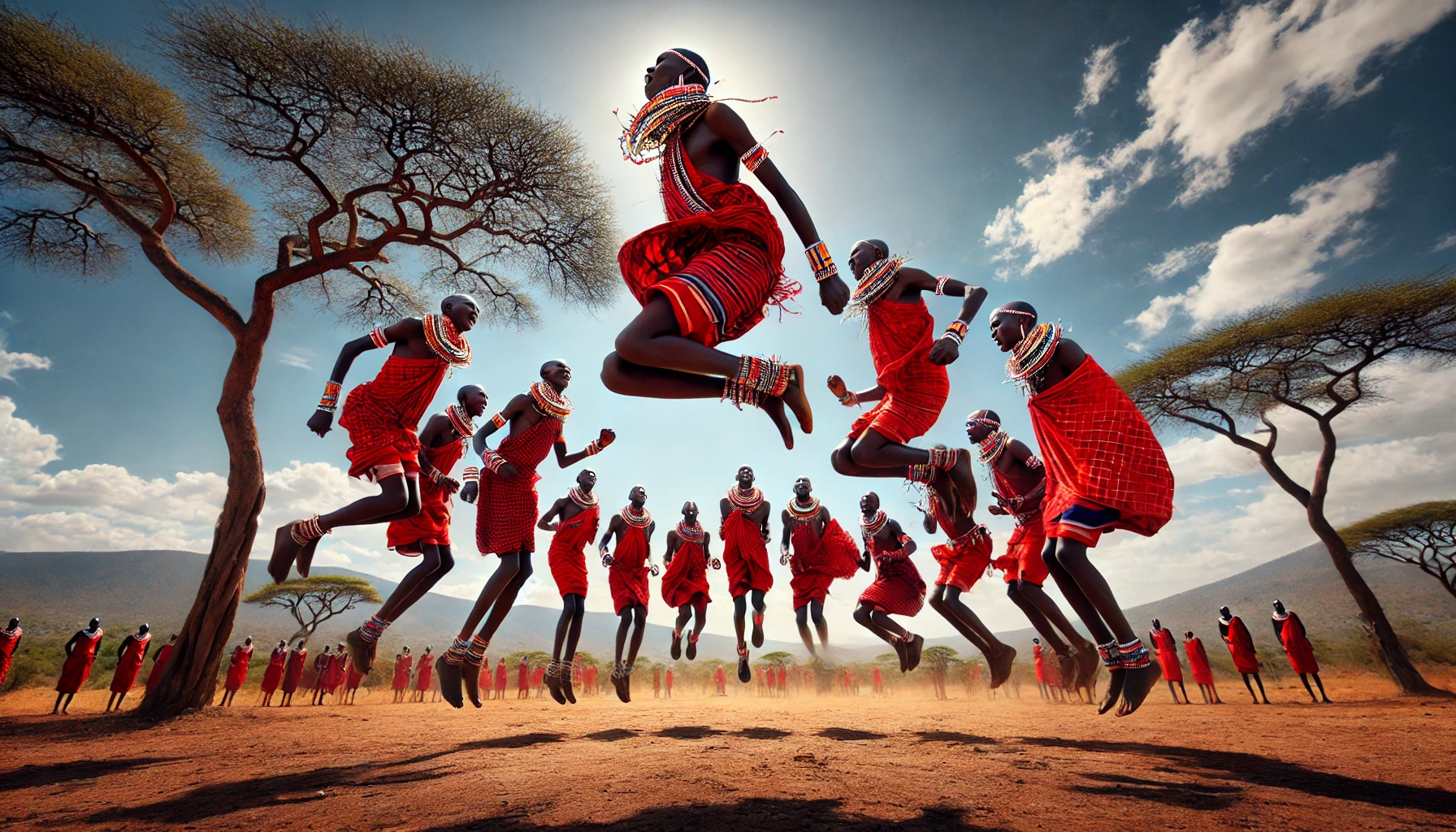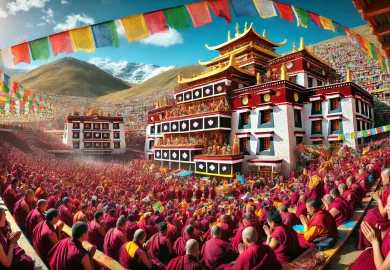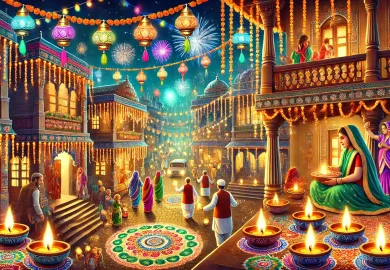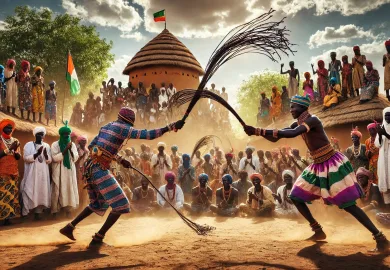
The Maasai people, indigenous to Kenya and Tanzania, are renowned for their rich cultural heritage and traditions, one of the most iconic being the Maasai jumping dance, known locally as “Adumu” or “Aigus.” This captivating dance is not just a spectacle of physical prowess but also a deeply rooted cultural ritual that symbolizes strength, unity, and community pride. As one of the most recognizable aspects of Maasai culture, the jumping dance has become a symbol of the Maasai’s enduring traditions in a rapidly changing world.
Origins and Cultural Significance of the Maasai Jumping Dance
The Maasai jumping dance, or Adumu, is more than just a display of athletic ability; it is a vital part of Maasai warrior ceremonies and rituals. Historically, the dance is performed during the Eunoto, a ceremony that marks the transition of young men into warriors, known as “Morans.” This ceremony is a significant rite of passage, symbolizing the young men’s readiness to protect and lead their communities.
The dance itself involves participants standing in a circle, taking turns to leap into the air from a standing position, often reaching impressive heights. The higher a warrior can jump, the more he is admired and respected by his peers. This aspect of the dance is not just about physical ability but also about showcasing one’s courage, endurance, and commitment to the community.
Moreover, the Maasai jumping dance serves as a way to bond the warriors together. As they perform the dance, they chant and sing, creating a rhythm that drives the energy of the group. This communal aspect of the dance reinforces the Maasai values of unity and cooperation, which are crucial for the survival and prosperity of their communities.
The Unique Techniques and Rhythms of the Maasai Jumping Dance
One of the most fascinating aspects of the Maasai jumping dance is the technique involved. Unlike other forms of dance that require elaborate footwork or intricate movements, the Adumu is relatively simple yet physically demanding. The warriors maintain a rigid, upright posture, keeping their bodies straight as they spring vertically into the air. Their arms remain close to their bodies, and the focus is entirely on the height of the jump.
The rhythm of the dance is dictated by the deep, resonant chants and songs performed by the warriors. These chants are often led by an elder or a particularly respected warrior, and they vary in tone and intensity depending on the occasion. The combination of the chanting and the visual spectacle of the warriors leaping into the air creates a mesmerizing experience for anyone witnessing the dance.
This technique also highlights the importance of endurance and stamina in Maasai culture. The warriors often continue the dance for extended periods, demonstrating not only their physical strength but also their mental resilience. This endurance is symbolic of the challenges they face in their roles as protectors and leaders of the Maasai people.
The Role of the Maasai Jumping Dance in Modern Times
In contemporary times, the Maasai jumping dance has transcended its traditional roots and has become a symbol of Maasai identity on a global stage. With the rise of tourism in Kenya and Tanzania, the dance is often performed for visitors as a way to showcase Maasai culture. This has helped to preserve the tradition, as younger generations are encouraged to learn and participate in the dance, ensuring its continuity.
However, the commercialization of the Maasai jumping dance has sparked discussions about cultural preservation versus exploitation. While the dance provides an economic opportunity for many Maasai communities through tourism, there are concerns that it could lose its cultural significance if reduced to a mere performance for tourists. Despite these challenges, many Maasai continue to see the dance as a powerful way to share their heritage with the world while maintaining the integrity of their cultural practices.
Furthermore, the Maasai jumping dance has also found its way into popular culture, with many people outside of the Maasai community attempting to replicate the dance. This has led to a broader recognition of Maasai culture, although it also raises questions about cultural appropriation and the importance of respecting the origins and meanings of such traditions.
The Future of the Maasai Jumping Dance: Challenges and Opportunities
The future of the Maasai jumping dance is shaped by both challenges and opportunities. One of the main challenges is the ongoing modernization and changing lifestyles within Maasai communities. As more young Maasai pursue education and move to urban areas, there is a concern that traditional practices like the jumping dance may diminish over time. Additionally, the environmental changes affecting the Maasai’s pastoral way of life could also impact the continuation of their cultural traditions.
However, there are also significant opportunities for the preservation and promotion of the Maasai jumping dance. Efforts to document and teach Maasai culture in schools and cultural centers within Kenya and Tanzania are vital for ensuring that younger generations continue to learn and appreciate their heritage. Moreover, the growing interest in cultural tourism provides a platform for the Maasai to share their traditions with a global audience, potentially leading to greater awareness and respect for their culture.
In conclusion, the Maasai jumping dance is a vibrant and enduring symbol of Maasai culture, reflecting the strength, unity, and resilience of the Maasai people. As it continues to captivate audiences around the world, it serves as a reminder of the importance of preserving cultural traditions in an ever-changing world. The future of the Maasai jumping dance will depend on the balance between embracing modernity and maintaining the deep-rooted values that the dance represents.








